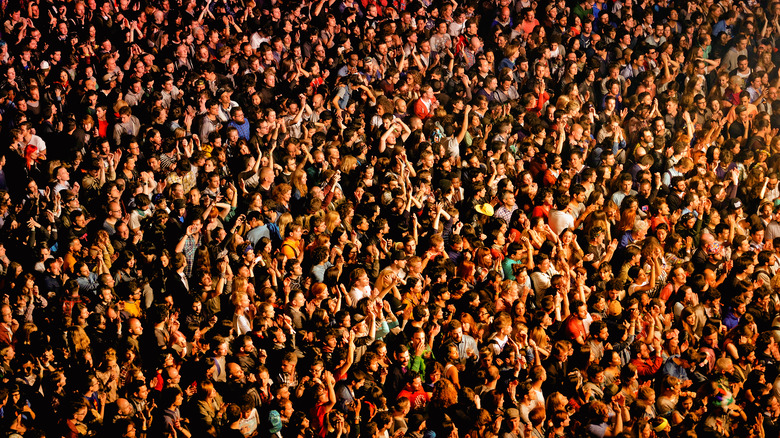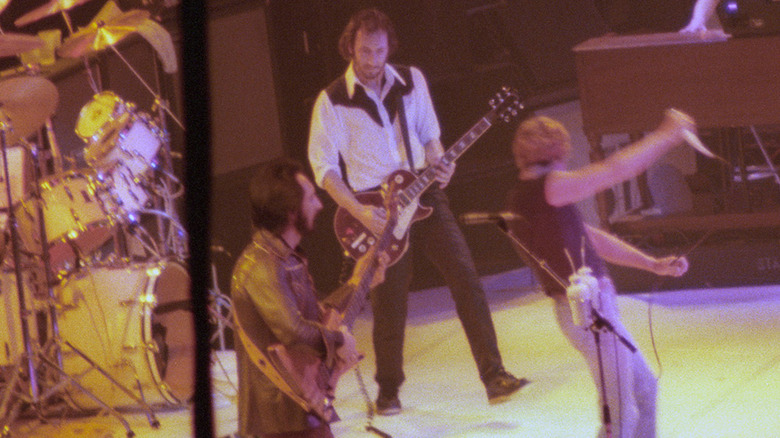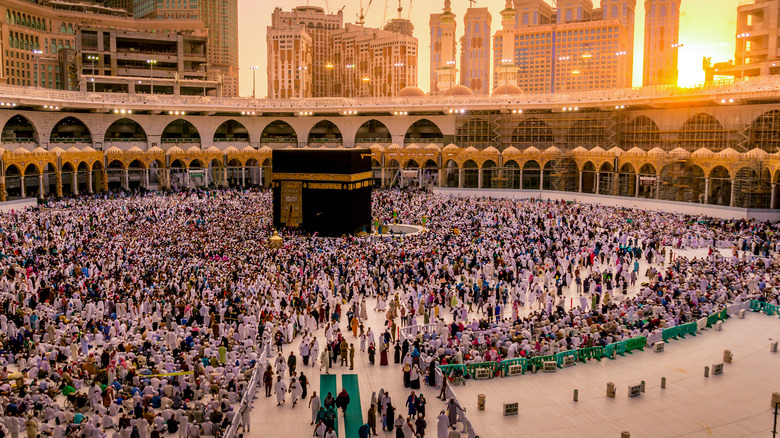Here's What Really Happens To Your Body When You Die During A Human Stampede
It's kind of an ironic way to die, and it's definitely horrible. Imagine being surrounded by a massive crowd yet no one knows you are suffocating, nor can they do anything to help as they too are caught in the waves of human pressure and force in which individuals are so compacted together that their movement takes on a sort of fluidity that those involved in have no control or power to stop.
It's called "crowd crush." According to Cheddar News, between 1980 and 2007, roughly 7,000 people died that way in 216 different stampedes and today it's estimated that 380 people are killed per year as a result of being crushed by the crowd they are part of.
Crowd crushes, or human stampedes, happen all over the world where large crowds of people congregate, from religious pilgrimages to rock concerts and sporting events to Black Friday sales. The phenomenon can be explained in part, by physics.
According to a 1993 paper, "The Causes and Prevention of Crowd Disasters," by Dr. John Fruin, "At occupancies of about seven persons per square meter, the crowd becomes almost a fluid mass. Shock waves can be propagated through the mass sufficient to lift people off of their feet and propel them distances of [10 feet] or more. People may be literally lifted out of their shoes, and have clothing torn off. Intense crowd pressures, exacerbated by anxiety, make it difficult to breathe."
People die from compressive asphyxia
While it's often reported that people die from being trampled to death in crowd stampedes, in reality, according to Fruin, the cause of death is almost always compressive asphyxia, or essentially, having your torso squeezed so tightly that you can't breathe. There are two likely scenarios for how this might occur. Because people are so tightly jammed together, in a sense they are holding each other up. When one person falls, it makes a hole and someone who may have been leaning on that person is then pushed on top, and on and on.
According to the Fruin, at the Ibrox Park Stadium in Glasgow, Scotland incident in 1971 when 66 people were asphyxiated, the pile of bodies was 10 feet high. Fruin wrote, "at this height, people on the bottom would experience chest pressures of [800-900 pounds] assuming half the weight of those above was concentrated in the upper body area."
The other situation is when people are killed where they stand as a result of being pushed against from every side. Fruin describes The Who concert in Cincinnati in 1979 where several bodies were found 30 feet from a wall near the entryway, as indicating, "that crowd pressures probably came from both directions as rear ranks pressed forward and front ranks pushed off the wall."
"I couldn't move. I could only scream"
Another part of this tragic phenomenon is that people are pretty much helpless to help anyone else. According to The New Yorker, a man who survived the disastrous The Who concert in Cincinnati told his story in a letter to the investigative committee. His words illuminate how, once the situation begins, it's like a domino effect that is nearly impossible to escape.
He wrote, "They began to fall, unnoticed by all but those immediately surrounding them. People in the crowd 10 feet back from them didn't know it was happening. Their cries were impossible to hear above the roar of the crowd ... There was a pile of people forming, and all of the people around them were being crushed into the pile, for there was no resistance. If the person in front of you went down, then you would follow for there was no one to lean against."
The man continued, "With this realization, I began to add to the screaming, 'They're going down, they're going down!' I yelled repeatedly ... A wave swept me to the left and when I regained a stance I felt I was standing on someone. The helplessness and frustration of the moment sent a wave of panic through me. I screamed with all my strength that I was standing on someone. I couldn't move. I could only scream."
Being crushed in a crowd also restricts blood flow
What happens when you are being crushed by a crowd, according to Fruin, is that the "intense crowd pressures, exacerbated by anxiety, make it difficult to breathe. The heat and thermal insulation of surrounding bodies cause some to be weakened and faint. Access to those who fall is impossible. Removal of those in distress can only be accomplished by lifting them up and passing them overhead to the exterior of the crowd."
The cause of crowd crush can come from a sudden panic, like a fire when a lot of people are vying to get to safety through a limited space, or in a lot of cases, it has to do more with people in the back of the crowd trying to go toward something, like to get into an event, not realizing what is happening to the people in front.
According to the Encyclopedia of Forensics Science (via Science Direct), not only does being crushed by a crowd of people make it so a person can't breathe, it also inhibits blood flow to the heart and "causes reflow of blood to the neck and head region," essentially blocking blood from getting to the brain causing people to pass out, and ultimately, die.



